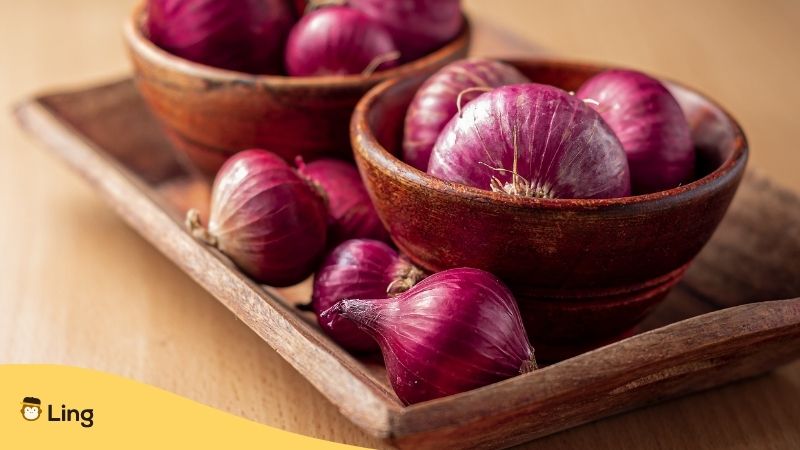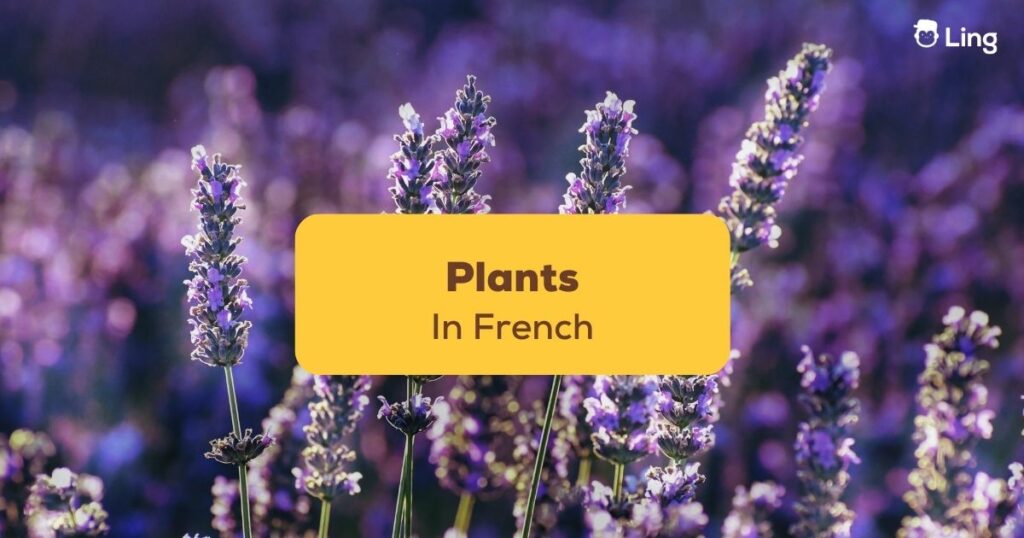When one imagines plants in French, what springs to mind are fields of purple lavender and wild poppies in Provence, golden sunflowers on the French Riviera, fruit trees, and grapevines surrounding the grand chateau of Bordeaux. And honestly, there’s no one to blame for this idea! France is filled with wonderful plants; some are pretty, some are tasty, and some are simply gorgeous to look at. So, let’s have a look at les plantes de la France.
Learning French words related to plants can open up a world of beauty and fascination. Not only will it enable you to appreciate flora and fauna of French-speaking regions, but it will also give you the ability to communicate about gardening, agriculture, and conservation with French speakers. By mastering botanical terms in French, you’ll gain a deeper understanding of the French way of life and culture and the country’s rich history of horticulture. Ready to learn more? Add a touch of elegance and refinement to your language skills by learning the words we have below.
Common Plants In French
Lovely Smelling Lavender (Lavande)
One of the most iconic French plants is lavender. This aromatic flowering plant is grown in the Provence region of southern France and is famous for its beautiful purple flowers and soothing fragrance. Lavender is often used in perfumes, soaps, and other personal care products, as well as in cooking and baking.
Gorgeous Tasting Grapes (Raisins)
Grapes are another iconic French plant, and France is synonymous with wine and is about one-third of the world’s largest wine producers. Grapes are grown in vineyards across the country, and the resulting wine is celebrated for its complexity, aroma, and taste. Among the most famous French wines are Champagne, Bordeaux, and Burgundy.
Amazing Artichokes (Artichauts)
A popular vegetable in French cuisine and often used in soups, stews, and salads, the artichoke plant is native to the Mediterranean region. It is believed to have been brought to France by the Romans. Today, artichokes are grown in many parts of France and are prized for their delicate flavor and nutritional benefits. The tastiest and most fought-over part of the plant at the dinner table is its heart.
Crunchy Carrots (Carottes)
Carrots are another popular vegetable in France used in many traditional French dishes. Carrots are rich in vitamins and minerals and are known for their sweet, crunchy taste. They are often served as a side dish or used as an ingredient in soups and stews. You can treat yourself to a firm young homegrown carrot by planting seeds yourself.
Astounding Asparagus (Asperges)
Asparagus is a spring vegetable that is highly prized in French cuisine. This tender vegetable, grown from a seedling planted dans le soil, is rich in vitamins and minerals and is known for its diuretic properties.
Gorgeous Garlic (Ail)
Garlic is a staple of French cooking and is used in almost every French dish, such as sauces, stews, and soups. Believed to have originated in Central Asia, garlic has been cultivated in France for centuries. This pungent herb is valued not only for its flavor but also for its medicinal properties and is beneficial for the blood and the heart.
Juicy Tomatoes (Tomates)
Tomatoes are another French plant that one can grow from seeds planted in a dark, warm part of the garden. Tomatoes are versatile in many French dishes, including salads, soups, and sauces. They are high in vitamin C and are known for their rich, juicy flavor and essential antioxidant plant physiology properties.

Appetizing Potatoes (Patates)
A significant addition to French cuisine and used in many traditional dishes, including gratins, casseroles, and pommes frites, these vegetables are rich in starch and are known for their creamy texture and mild, earthy flavor. Originally from the Americas, these tubers are full of vitamin C and, in times past, excellent food for staving off scurvy.
Leafy Lettuce (Laitue)
Lettuce is a leafy green vegetable often used in salads and sandwiches. Many different lettuce species exist, including romaine, iceberg, and butterhead. Lettuce is low in calories and is rich in vitamins and minerals, making it a slimming, healthy addition to any meal. The vitamin A in luscious lettuce is excellent for the eyes, skin, and bones.
Flavorsome Onions (Oignons)
Onions are a staple of French cooking and are used in many dishes, including sauces, stews, and soups. Onions are rich in antioxidants and are known for their pungent, sweet flavor and have long featured on picture postcards dangling around the neck of a Frenchman in a stripy long-sleeved shirt riding a bicycle.

Exotic Imported Plants
In addition to native plants, France is also home to many exotic and imported plants, fruits, and vegetables. Many were brought to France by explorers and traders, while others were intentionally introduced for their ornamental or medicinal value. One such plant is the magnolia tree, which is native to the southeastern United States but has been widely cultivated in France for its beautiful flowers.
Symbolic Flowers
French plants also have symbolic meanings. For example, the lily symbolizes purity and is often associated with the Virgin Mary in Christian art. The iris, which is the national flower of France, is a symbol of wisdom and courage. And the poppy is often used as a symbol of remembrance for soldiers who died in World War I because the seedlings thrive in the land churned up by the shells and war machinery.
French Gardens
French culture also has a long tradition of gardening and botany, which both practical and aesthetic considerations have influenced. French gardeners are particularly keen on geometric patterns and symmetrical arrangements of planting and plant examples, and they often feature fountains, statues, and other decorative elements. One of the most famous French gardens is the Palace of Versailles, which features expansive lawns, manicured hedges, fountains, and sculptures.
Easy French Plant Vocab
Plants have always played an important role in French culture and cuisine. Whether native or imported, plants and crops provide beauty, nourishment, and economic value to the soil and the life of the people of France. And the rich vocabulary and symbolism associated with plants in French add depth and complexity to the language. So, let’s look at some French plant and flower words to enhance your vocabulary.
| English | French |
| Agriculture | Agriculture |
| Annual | Annuelle(f) Annuel(m) |
| Berry | Baie |
| Biennial | Biennale(f) Biennal(m) |
| Botany | Botanique |
| Bulb | Ampoule |
| Fertilizer | Engrais |
| Flora | Flore |
| Flower | Fleur |
| Forest | Forêt |
| Fruit | Fruit |
| Garden | Jardin |
| Grow | Grandir |
| Herb | Herbe |
| Horticulture | Horticulture |
| Leaf | Feuille |
| Petal | Pétale |
| Pollen | Pollen |
| Root | Racine |
| Sappling | Jeune arbre |
| Seed | Graine |
| Shrub | Arbuste |
| Soil | Sol |
| Stem | Tige |
| Tree | Arbre |
| Vegetable | Légume |
| Vegetation | Végétation |
Learn French And Other Languages With Ling App

Learning French and other languages with the Ling app is easy. Ling app uses quizzes, games, and more traditional language lessons to make learning fun. By downloading the Ling app to your mobile device, you will always have it to hand to learn at your own pace. Download the only language app you need today at App Store and Google Play.






























